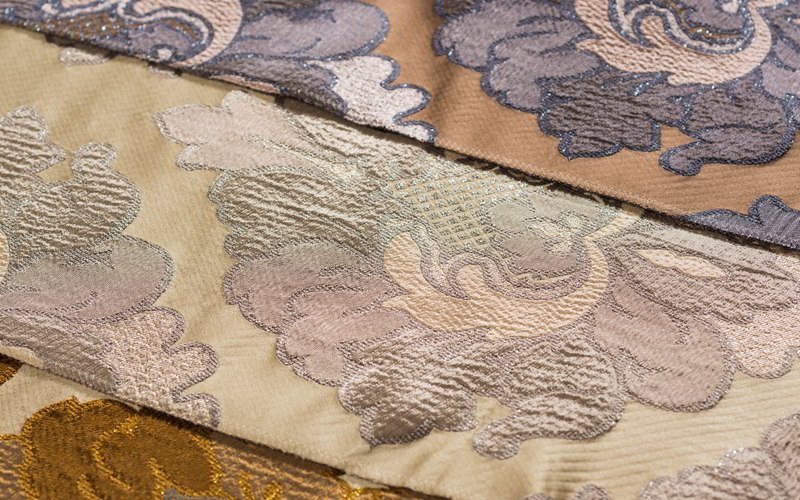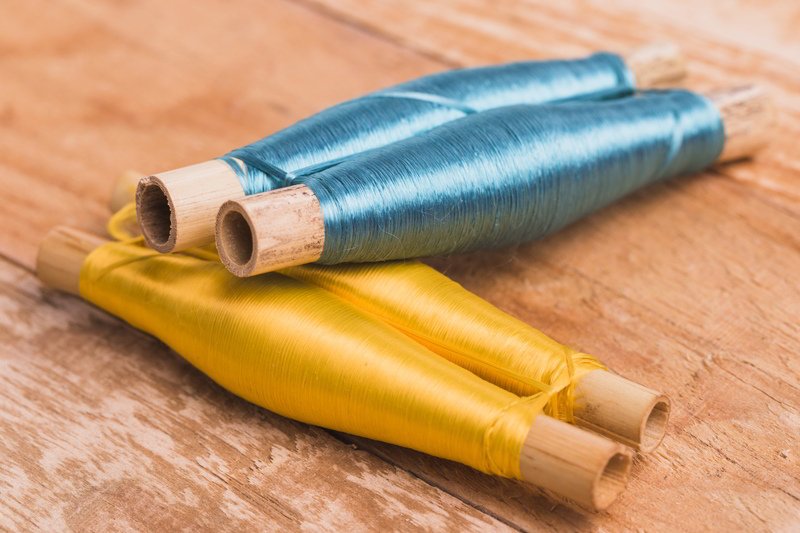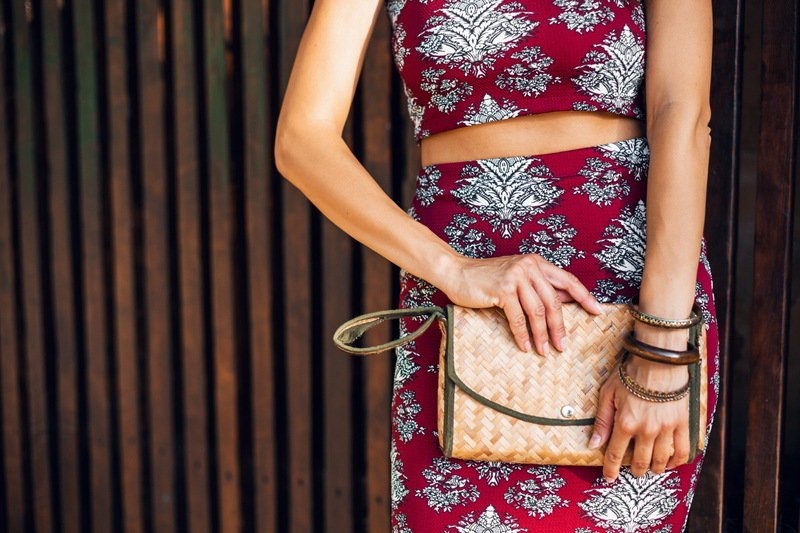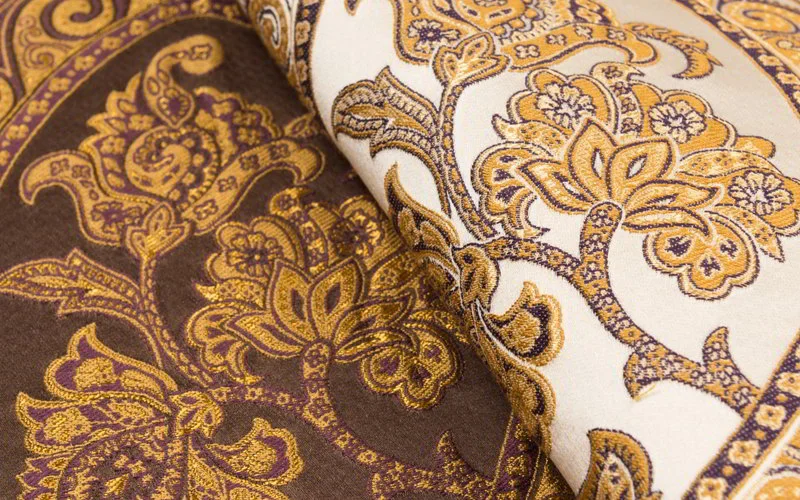What Is Brocade: Luxury Woven Fabric, Patterns And Uses Guide
What if a fabric could embody pure luxury, with patterns so intricate they seem to float on its surface? The answer lies in brocade. This guide demystifies this special woven textile, famed for its raised, often colorful designs created through sophisticated weaving techniques. Learn about its hallmark features, the journey from silk or cotton threads to stunning apparel and home decor, and essential tips for preserving its beauty.
1. What makes brocade special?
Brocade has several unique qualities that set it apart from other fabrics. Understanding these brocade special features helps you appreciate why it’s often considered a luxury apparel material and a treasured textile for various applications. It’s these very details that make it so distinctive.

1.1 The raised, woven-in pattern
This is the most important thing to know about brocade. The beautiful designs you see are not printed on top or stitched on later; they are woven directly into the fabric structure. This creates a distinct raised pattern.
- How it feels: When you touch brocade, you can often feel the pattern. It has a texture that isn’t flat. This tactile quality makes it an ornamental textile that appeals to both sight and touch.
- Different from printed fabric: Printed fabrics have designs applied to the surface with ink or dye after the fabric is made. If you look closely at a print, the pattern sits on top. With brocade, the brocade woven pattern is part of the fabric itself. Its pattern characteristics are integral to its construction. This is a key difference when comparing brocade vs print.
- Different from embroidery: Embroidery involves stitching designs onto a finished piece of fabric with needles and thread. In brocade, the patterns are created during the weaving process by interlacing different threads. So, brocade vs embroidery is another important distinction: brocade’s design is woven in, not sewn on.
1.2 Often rich and colorful
Brocade is famous for its brocade colors and brocade designs. These can range from simple, single-color motifs to very complex, multi-colored pictures and patterns. You’ll often see flowers, leaves, geometric shapes, or even scenes woven into the fabric. The use of different colored threads allows for these detailed fabric patterns, which can be bright and bold or soft and subtle.
1.3 Variety of looks and feels
Not all brocades are the same. The brocade texture and appearance can change a lot depending on the types of threads used. Some brocades are shiny and smooth, especially if made with silk, while others might be more matte. There are different types of brocade fabric; some are heavy brocade, thick and sturdy, perfect for coats or furniture, while others can be lighter and softer, suitable for dresses.
2. How is brocade made?
The brocade manufacturing process involves a clever weaving technique. The key thing to remember is that the brocade woven pattern is created as the fabric itself is being made. This brocade manufacturing process is what gives brocade its unique, built-in designs.
2.1 It’s a woven fabric
Like many fabrics, brocade is woven. This means it’s made by interlacing two sets of threads: the warp threads (running lengthwise) and the weft threads (running crosswise). The pattern in brocade is formed during this interlacing process. This fundamental brocade weave structure is part of general textile weaving techniques explained simply.
2.2 Special looms
To create complex and detailed patterns in brocade, weavers often use a special machine called a Jacquard loom (pronounced “JACK-ard”). This amazing invention, a key part of Jacquard loom, can control individual warp threads.
This allows for very intricate designs that would be incredibly difficult or impossible to make on simpler looms. The type of weave it creates is called a Jacquard weave. Many beautiful brocades are made using a brocade loom of this type.

2.3 Extra threads for the pattern
One of the secrets to brocade’s raised patterns is the use of extra weft threads. These are called supplementary weft threads. These additional brocade threads are woven in only where the pattern needs them on the front of the fabric.
On the back, these threads might “float” or be carried across areas where they are not part of the design. This technique is crucial for the brocade pattern making process and helps give the pattern its raised, textured look.
3. What materials are used to make brocade?
The types of brocade materials used to make brocade greatly affect its look, feel, durability, and cost. The brocade fiber composition is a key factor in the final fabric threads and overall quality.

3.1 Traditional threads
These are materials that have been used for centuries to create brocade.
- Silk: Silk is the most famous and traditional material for brocade. Silk fibers create a fabric that is shiny, smooth, and feels very luxurious. Silk brocade is highly prized for its beauty and drape. Many traditional brocade materials feature silk.
- Cotton: Cotton brocade is often softer and less shiny than silk brocade, but it can still be very beautiful and detailed. It’s generally more affordable than silk.
3.2 Modern threads
Newer options have expanded the possibilities for brocade.
Synthetic fibers (like polyester or rayon): Using synthetic brocade materials like polyester or rayon can make the fabric more affordable, durable, or add different textures. Sometimes, these modern brocade materials are blended with natural fibers like cotton or silk to combine their qualities. You might find polyester brocade or rayon brocade used in a variety of items.
3.3 Metallic threads
To add extra sparkle and richness, brocade often includes metallic thread brocade. These can be gold, silver, or other shiny colored threads woven into the design, creating effects like gold brocade or silver brocade. Historically, the use of genuine metallic threads made these brocades incredibly valuable.
4. Where do we see brocade? common uses
Despite its often fancy appearance, brocade is quite versatile. You can find brocade uses in many different items, from clothing to home decorations. It is particularly popular in fashion apparel. If you’re wondering about the uses of brocade, the answer is quite a lot!

4.1 Clothing
Brocade is very popular for special occasion wear and elegant garments, often considered a luxury garment material.
- Dresses, gowns, and traditional outfits: Think of formal dresses, stunning wedding gowns, or beautiful cultural attire. This is a common use for silk brocade fabric. You’ll see brocade dresses and brocade gowns at many formal events, as well as stunning traditional brocade outfits.
- Jackets, vests, and elegant coats: Brocade can elevate outerwear, making jackets and vests look very stylish and sophisticated.
- Historically, worn by royalty and wealthy people: For centuries, brocade was a symbol of status and wealth. It was particularly prominent in places like China and European courts.
4.2 Home decorations
Brocade adds a touch of elegance and luxury to home interiors.
- Furniture coverings (upholstery): Heavier brocades are excellent for making sofas and chairs look grand and opulent. You’ll often find brocade upholstery on statement pieces.
- Curtains and drapes: Brocade curtains can make a room look rich and formal.
- Decorative pillows and tablecloths: Smaller touches of brocade can add a luxurious accent to any room.
4.3 Accessories
Even small items can be made special with brocade.
- Fancy bags or purses, such as brocade bags.
- Ties or bow ties, like elegant brocade ties.
- Decorative ribbons.
5. Why is brocade often seen as a luxurious fabric?
5.1 Its history
Understanding brocade history is key. Historically, making brocade was very expensive and time-consuming. This meant that only the very wealthy, like royalty and nobility, could afford it. This long association with wealth and power has given brocade a lasting image of luxury.
When understanding brocade textile history, its connection to status is clear, making it one of the most notable expensive fabrics history can show us.
5.2 The skill needed to make it
Creating complex brocade patterns, especially before modern inventions like the Jacquard loom, required immense skill and many hours of labor. The brocade craftsmanship involved in skilled weaving was extraordinary. Even today, producing high-quality brocade is a specialized art. Some historical pieces involved entirely hand-woven production, making them priceless.
5.3 The materials used
As mentioned, traditional brocades were often made from expensive materials like silk. The brocade material cost could be very high, especially if real gold or silver threads were used. High-quality silk brocade value remains significant today due to these premium fabric materials.
5.4 The beautiful look
Perhaps the most obvious reason is simply how beautiful brocade is. The detailed, raised patterns, rich colors, and often shiny threads give it a special, opulent appearance. Its beautiful fabric quality, visual depth, and unique texture make it stand out as one of the most opulent textiles. The brocade appearance itself speaks of luxury.

6. Brocade-inspired quality: branding your special items
The qualities that make brocade so special—its richness, intricate detail, luxurious texture, and history of quality—are things many brands want to associate with their own products. Even if your product isn’t made of brocade, your branding can suggest similar high standards and attention to detail.

6.1 Reflecting luxury and detail
For high-end items, including actual brocade garments, the labels and tags should match the product’s quality. They are an essential part of the overall presentation.
Choosing the right labels: Packlove can help you design labels and tags that feel special.
For instance, custom woven labels, especially high-definition damask woven labels, offer a detailed and luxurious look, perfect for conveying a premium feel. Packlove offers guidance on selecting label materials like high-definition damask or satin that enhance the luxurious feel of brocade or other quality textiles. For your woven label, we ensure top quality.
Elegant hang tags: Made from thick textured paper can add significant perceived value. Packlove provides custom design support to create elegant and intricate branding on hang tags suitable for premium brocade products.
When considering custom clothing labels for brocade garments, it’s important to think about how they complement the fabric. Packlove can advise on appropriate attachment methods for labels to ensure brocade fabric is not damaged, suggesting sew-on options for delicate items. This shows our experience and care.
Clear care information
Clear care labels for clothing are especially important for delicate fabrics like brocade. Proper garment care for delicate materials helps customers keep their items beautiful for longer. A well-designed care label shows you care about your product even after it’s sold. For example, a care label that clearly states “Dry Clean Only” provides essential information for preserving a brocade garment.
6.3 Packlove’s approach
At Packlove, we appreciate the artistry and detail that goes into fine materials like brocade. We bring that same attention to detail to our custom branding and premium packaging solutions. We help brands create packaging and labels that truly showcase the quality of their products, sometimes drawing inspiration from the timeless elegance of fine textiles.
7. Quick tips for caring for brocade
7.1 Always check the care label first
This is the most important tip for brocade care label instructions! The label provides specific cleaning instructions based on the fibers used in the fabric. Always follow these fabric care instructions.
7.2 Usually “dry clean only”
Many brocade fabrics, especially those made with silk or metallic threads, require you to dry clean brocade. Home washing brocade can cause damage, color bleeding, or shrinkage.
7.3 Be gentle
When handling brocade fabric, always be gentle. Avoid rough handling or wringing. The raised threads in brocade can snag on jewelry or rough surfaces, so be careful when wearing or using brocade items to prevent snagging brocade.
7.4 Storage
Store brocade items carefully. Avoid crushing them, as this can flatten the raised patterns. For valuable small brocade items, samples, or swatches, a protective bag can help keep them safe, clean, and protected.
This is a good idea for brocade sample packaging or even premium packaging for delicate brocade items like small accessories. Proper storing brocade helps maintain its condition.
8. Brocade in a nutshell: key things to remember
Here’s a quick brocade summary of the brocade key features if you want a simple explanation of brocade:
- Woven-in, raised patterns: The design is part of the fabric itself.
- Pattern is part of the weave: It’s not printed on top or embroidered later.
- Materials: Can be made from silk, cotton, synthetic fibers, or include metallic threads.
- Uses: Common in special occasion clothing, traditional outfits, elegant home decor, and accessories.
- Why luxurious: Its rich history, the skill required to make it, the quality of materials often used, and its beautiful, opulent appearance.
9. Frequently asked questions (FAQs)
9.1 Is brocade always expensive?
Not always. The brocade price depends heavily on the material used (pure silk brocade will be more expensive than synthetic brocade) and the complexity of the pattern. An expensive brocade usually involves high-cost fibers and intricate weaving. Learning how to identify different types of brocade can help you understand the price variations.
9.2 Can I wash brocade at home?
Usually, no. It’s generally not recommended to wash brocade at home, especially if it’s silk brocade or contains metallic threads. Cleaning silk brocade often requires professional dry cleaning to avoid damage. Always check the care label first!
9.3 What’s the difference between brocade and damask?
This is a common question as both brocade and damask are patterned fabrics, often woven on a Jacquard loom. Here’s a simple way to understand the difference between brocade and damask:
- Brocade: Patterns often appear “on top” of the background fabric, are frequently made with different colored threads for the pattern and background, and the fabric is not usually reversible (the back can look messy with “floats” of thread). The pattern often feels more raised.
- Damask: Patterns are flatter and created by a contrast of weaves (e.g., shiny pattern on a matte background, or vice-versa), often in a single color. Damask is typically reversible, with the pattern visible on both sides (the light/dark areas of the pattern will be swapped on the reverse).
Understanding this difference between brocade and damask helps in appreciating these distinct jacquard fabrics comparison.
9.4 How do I know if it’s real brocade?
To identify brocade fabric and tell if it’s real brocade:
- Look for patterns that are woven into the fabric, not printed on the surface.
- Feel the fabric for texture; the design should often feel slightly raised.
- Check the back of the fabric. You might see “floats” – threads that pass across the back where they are not part of the pattern on the front. This is a good sign of a woven pattern.
These tips help in identifying quality in patterned textiles.
Read more:
We hope this guide has helped you understand the beautiful and special fabric that is brocade! Its rich history, intricate production, and luxurious feel make it a textile worth appreciating.
At Packlove, we believe that the way you present your products matters just as much as the products themselves. If you’re inspired by the quality and detail of materials like brocade and want your branding to reflect that same excellence, we’re here to help.
From custom woven labels that add a touch of sophistication to elegant hang tags and protective packaging, Packlove offers solutions to make your brand shine. Ready to elevate your branding? Explore our range of custom labels, tags, and packaging, or contact us today for expert advice on creating the perfect presentation for your unique products.






















